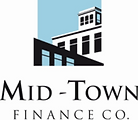5 Types of Dischargeable Debts Included in a Bankruptcy Claim
Filing for bankruptcy can help individuals find relief in their debts and help them find ways to repay some loans. Even if filing for it can affect an individual’s credit score, in the long run, it is a reliable way to alleviate the pressure on someone’s financial situation. But depending on the type of bankruptcy filed for, there are dischargeable debts included in every claim.
Dischargeable debts are loans that a bankruptcy claim may eliminate after a person files for it. As a result, the debtor will no longer have to pay for specific debts and lose the legal obligation. Depending on the type of bankruptcy filed, people can acquire various dischargeable debts.
1. Credit Card Debts
Credit card debts are probably the most common type of debt covered by a bankruptcy claim. Whenever someone has a credit card, the bank will lend them the amount to purchase a product or service. Credit card debt usually involves a specific value and interest rate, meaning that a person will have to pay a certain amount of money in exchange for using a card. It is necessary to ensure no debts to maintain a good credit rating.
2. Medical Bills
Medical bills usually involve a lot of expenses. Even when a person has a health insurance policy, they will still have to cover the deductible. Medical bills include the amount of money paid for a medical service and money spent on medical supplies. Medical debt is usually not dischargeable by a bankruptcy claim, but it is still possible for debtors to file a Chapter 7 bankruptcy claim to relieve themselves.
3. Personal Loans
Personal loans involve a certain amount of money that a person borrows from a lender. Personal loans can be used to purchase a car, pay for education, or even start a business.
Banks usually provide personal loans and charge them a certain amount of interest. Personal loans are generally not dischargeable by a bankruptcy claim, but it is still possible to file a Chapter 13 claim to have their burdens reduced.
4. Past-Due Bills
Past-due bills are the money owed by a debtor to a particular person or entity. The three most common past-due bills are utility, medical, and rent payments.
Utility bills refer to money paid for using a particular utility service. For example, a person who has a power bill from their electric company will pay a specific amount of money every month. A bankruptcy claim usually covers such debts.
5. Student Loans
Student loans are one of the most common types of debt covered by a bankruptcy claim. Anyone who has ever attended a university to earn their degree can attest that student loans can become a burden.
There are federal loans and private loans available for students. It is common for a student to have to take out loans from the bank to pay for their tuition and expenses. Private loans require a higher amount of money than federal loans offer.
Conclusion
When filing for bankruptcy to clear up debt, everything depends on the debtor’s situation. A person’s credit score is just one aspect of their financial situation, and it does not necessarily determine the outcome of a bankruptcy claim. People who have a hard time paying for their debt can seek legal help and find the best filing solution for their needs.
Mid-Town Finance Company Huntsville aims to lend its clients a helping hand in times of need. We hope to alleviate the pressure our clients face in their financial situation while promising a fair and honest system through installment loans, personal loans, and ,small loans. Call us through our details available on our website today and inquire about a loan today.
